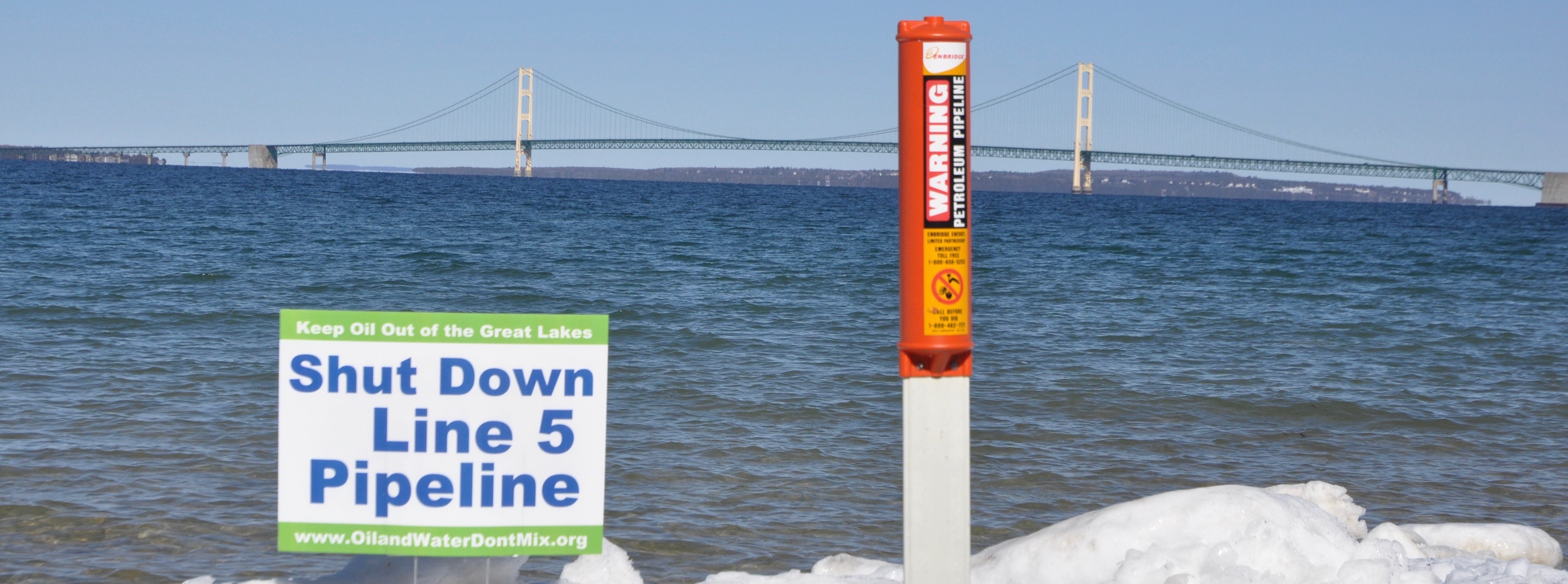Pipeline Protests

“Divergent” actress Shailene Woodley was arrested this October while protesting against the Dakota Access Pipeline, a $3.8 billion project designed to transport 450,000-570,000 barrels of crude oil per day across North Dakota, South Dakota, Iowa and Illinois. The construction of the pipeline runs next to Standing Rock Sioux reservation, where the tribe and its supporters have been protesting for months. Energy Transfer, the company behind the pipeline, says that it is “committed to protecting sensitive areas and the environment.” Despite this, the Standing Rock Sioux fear the project will damage sacred sites and affect their water supply.
While the Dakota Access Pipeline has been given national recognition, northern Michigan environmental groups are trying to bring attention to a similar issue that hits closer to home. Line 5, a 645-mile petroleum pipeline owned by Enbridge Energy Partners, carries oil from western Canada to eastern Canada via the Great Lakes states. The 63-year-old pipeline takes a shortcut through Michigan, crossing through the environmentally sensitive Straits of Mackinac, 10 miles of wetlands, and multiple rivers and streams.
Concern for the safety of the aging pipeline has grown after another of Enbridge’s pipelines leaked 820,000 gallons of oil into the Kalamazoo river in 2010 – the second spill of Enbridge’s that year. The Kalamazoo spill displaced residents of 30-50 homes in Calhoun County, coated animals and covered 4,435 acres of land near the river’s banks. It took two years to clean up 90 percent of the spill, and by May of this year cleanup costs reached $1.2 billion.
According to Beth Wallace from the environmental group S.U.R.F., Line 5 has demonstrated a multitude of issues. Since being built in 1953, the volume and pressure of fluids moving through the pipeline has increased by 10 percent, an amount that the aging line cannot sustain. Additional cause for concern is Enbridge’s lack of transparency over the type of oil being transported and whether the 700 reported “crack features” along the pipeline are being addressed.
Enbridge states that Line 5 is safe and is monitored 24/7 with regular inspections, and that they are open to addressing concerns; however, support for the decommission of Line 5 is growing exponentially. The Great Lakes are home to 20 percent of the fresh surface water on the planet. Hundreds of groups and businesses, along with thousands of concerned citizens, are petitioning to shut down Line 5 and keep the Great Lakes region safe.
Bipartisan action by Michigan legislators continues to pressure Enbridge Energy and the EPA to review the environmental safety of Line 5. In April, Michigan Congresswoman Candice Miller introduced the Great Lakes Pipeline Safety Act, which would give the U.S. Department of Transportation 18 months to analyze the the environmental and economic threat that Line 5 poses to the Great Lakes. Democratic Party candidate for Congress in Michigan’s 1st District, Lon Johnson, reacted positively to Miller’s legislation. “I am glad to see that our efforts . . . have resulted in bipartisan action on both the state and now the federal level. I have said for months that this 63-year-old Enbridge oil pipeline should be shut down at the Straits of Mackinac so it can be independently inspected to be safe. The impact on the health of our Great Lakes and on our economy in the event of an oil spill would be devastating.”
More information on the concerns of the coalition seeking to decommission Line 5 can be found at: oilandwaterdontmix.com.


